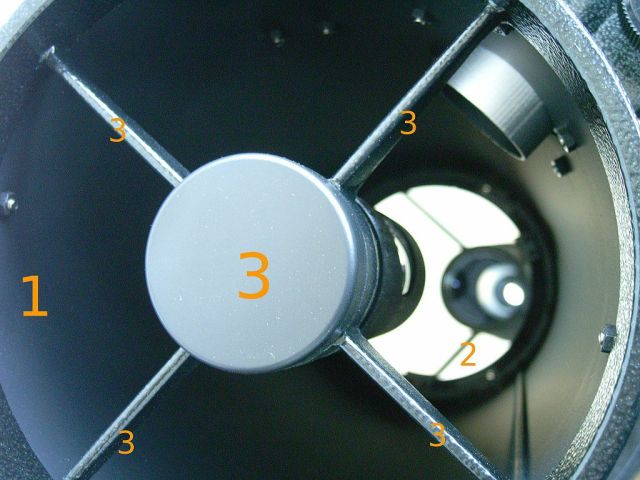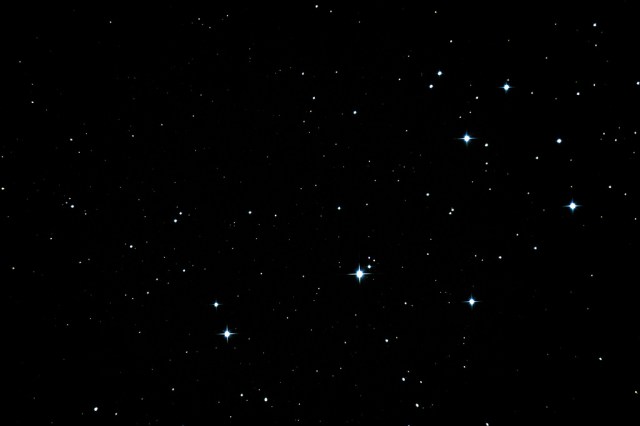Draw a star. It probably looks something like the ones in the picture above. Stars have points when we draw them, but why? Real stars, the ones in space, are round. So how did we get to the pointed star shape from balls of fire incandescent plasma?
One explanation might be diffraction spikes, optical artifacts created when light passes through a reflecting telescope. It results in what looks like rays shooting out from the center. The spikes are due to light bending around the support rod structure that holds the reflecting element of a telescope in place. Therefor, the pattern of the diffraction spikes mimics that of the support rods in a telescope.
Here’s a photo of the support structure of a reflecting telescope:

(Image via Svon Halenbach)
And this is an example of diffraction spikes in a photograph of stars:

(Image via Sergei Golyshev)
Makes sense, right? Except, humans have drawn stars with points well before the invention of the reflecting telescope in the 17th century. The paint L’Adoration des Mages was done in the 15th century by Jean Fouquet. Check out those sweet diffraction spikes!

Since Jean Fouquet clearly didn’t have access to a reflecting telescope, what with dying more than 100 years before its invention and all, what’s happening here? Simpler telescopes that relied on lenses only predate the reflecting telescope. They began appearing in 1608, but they don’t predate this painting.
Any time light passes through a lens, it becomes somewhat distorted. If you wear glasses or have ever looked through the windshield while driving at night, you know this already. Glasses date back to the late 13th century, so maybe Fouquet used them? This certainly isn’t the only example of a spiky star in art, and some date back even further.
Lenses and support rods aren’t the only causes of distortion. Our own eyes can distort things as well, causing a similar effect. They are lenses after all, but the exact way they do that isn’t as clear cut as the spikes from reflecting telescopes.
I wasn’t able to find a definitive answer to exactly what would cause a diffraction-spike-type distortion with just our eyes, and that seems to be for a few reasons. First, there are different types of distortions that can occur in human vision, and they’re caused by different things.
Some theories I found in researching this are that eyelashes can act similarly to the support structure of a reflecting telescope, blocking light. Squint your eyes at a streetlight at night, and you’ll see a some vertical lines. The shape of the eyelid and moisture on the surface of the eye distorting light were also suggested.
Whatever the exact cause of any given example of stars with spikes, the basic answer is that our eyes and the tools we use to observe the universe aren’t perfect.
(Image via Geoffrey Kehrig)
- How much money can you win in a single episode of Jeopardy!
- Could 100 monkeys with typewriters ever really type Hamlet?
- How much is Monopoly money actually worth?
Are you following The Mary Sue on Twitter, Facebook, Tumblr, Instagram, & Google +?









Published: Jun 27, 2014 02:00 pm